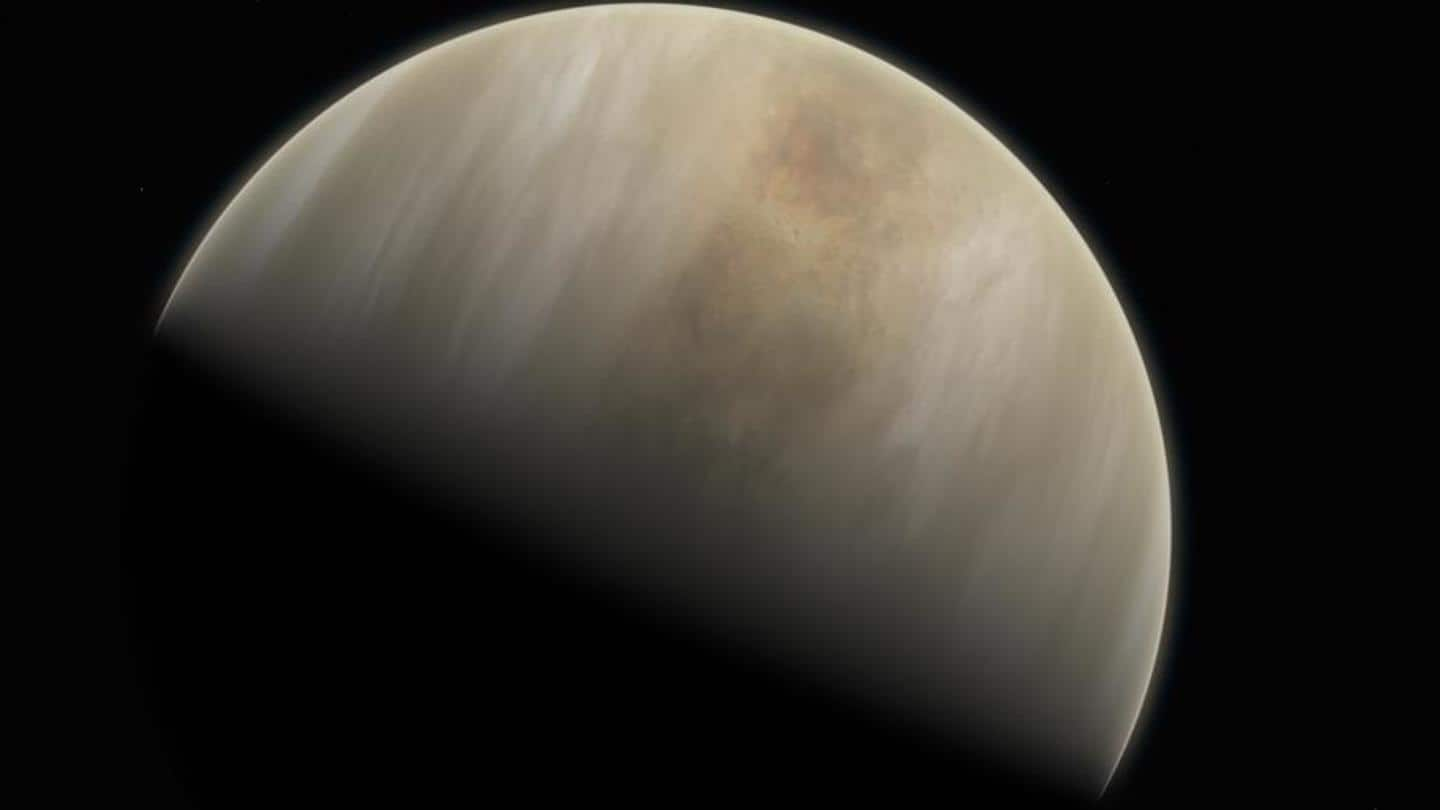
How scientists found potential signs of life on 'inhospitable' Venus
What's the story
Recently, a team of scientists made major headlines for discovering potential signs of life on Venus. NASA's Administrator Jim Bridenstine described the feat as "the most significant development yet in building the case for life off Earth." But, how exactly did the team discover possible 'biosignatures' on a planet that is largely believed to be inhospitable? Let's find out.
Venus
Venus has long been shunted aside due to its 'hellscape'
Venus is a close terrestrial neighbor of Earth but has not received enough attention from the scientific community owing to its hellscape - a surface hotter than all other bodies in the Solar System. The planet has a mean temperature of 464 degree celsius. Plus, it also has an acidic atmosphere which has 92 times more pressure than that of Earth's atmosphere.
Existence
But, life can exist in harshest environments
While the situation on Venus might not be suitable for humans, it's not enough to rule out the possibility of life completely. We have seen microbes thrive in some of the harshest environments on Earth, including the superheated, CO2-rich vents at Yellowstone, and the latest discovery, made by an international team led by Cardiff astronomer Jane Greaves, could also be a case like that.
Sign
So, what are these signs?
Greaves and team have discovered traces of phosphine in the acidic atmosphere of Venus. Phosphine, as many know, is a colorless but smelly gas known to be made only through industrial processes and some species of bacteria that can survive in the absence of oxygen. This led them to predict that there might be some form of biological activity that is producing this gas.
Discovery
Traces first found three years ago
The traces of phosphine came into notice in 2017, during an analysis of data collected on Venus's high clouds using the James Clerk Maxwell Telescope operated by the East Asian Observatory in Hawaii. The team knew that the finding of the rare molecule could change the whole world's perspective toward Venus, but they needed more, high-quality data to confirm the observation.
Confirmation
Then, they turned to a more powerful ground telescope
The researchers then used the 45 antennae of the Atacama Large Millimeter/submillimeter Array in Chile and observed Venus at a wavelength of about 1 millimeter, much longer than the human eye can see. The whole work found that phosphine indeed exists in Venus's clouds - at a concentration of about 20 parts per billion, which means only about twenty molecules in every one billion.
Quote
Both observatories had seen the same thing
"In the end, we found that both observatories had seen the same thing — faint absorption at the right wavelength to be phosphine gas, where the molecules are backlit by the warmer clouds below," Greaves said in the study published in Nature Astronomy.
Origin
Simulations were run to trace the gas' origin
After discovering phosphine and the approximate quantity in which it exists, the team ran a series of simulations to explain what could have caused the production of the chemical in the seen amounts. They wanted to check whether any natural, non-biological processes may have led to the formation, but none of the considered factors could make anywhere near the seen levels.
Best explanation
Microbial life came out as the best explanation
The calculations by the team showed that various natural factors, including sunlight, minerals blowing from the surface, volcanoes, or even lightning, could have made at most one ten-thousandth of the amount of phosphine found. This left microorganisms as the most plausible explanation; per researchers, microbes would only need to work at 10% of their maximum productivity to expel the observed levels in Venus's atmosphere.
Comment
"If it is life, it means we are not alone"
"With what we currently know of Venus, the most plausible explanation for phosphine...is life. I should emphasize that life, as an explanation for our discovery, should be, as always, the last resort," said MIT-based study co-author Clara Sousa-Silva. She added, "If it is life, it means that we are not alone. It also means that life itself must be very common."
Best case
Now, we need more data to confirm life on Venus
That said, while this makes the best case in the search for alien life, it is not a complete confirmation. Scientists need to peer into the atmosphere of Venus to surely determine whether phosphine is produced by microorganisms. If that is confirmed, they'd have to find how these microbes are different from Earth's organisms and how they survive Venus's acidic environment, among other things.